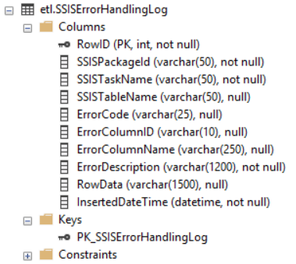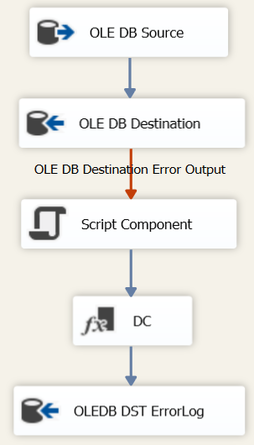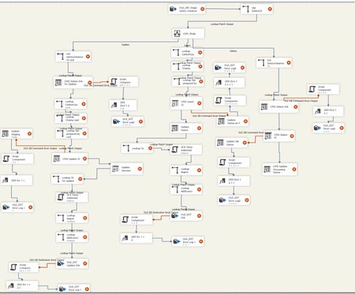|
I classify SSIS errors into two groups:
This blog post is about "Report and Pass" which I first talked about in Top 5 Best Practices for SSIS. There are hundreds of SSIS potential errors, and to start with, I STRONGLY recommend BI xPress from Pragmatic Works. SSIS package deployment and monitoring aside, however, what I'd like to talk to you about here is error handling inside of a data flow so that we are not sacrificing the permanent, the completion of your master-master package, on the alter of the immediate, a dateTime data type that came through last night in a text file's integer column space. Last month I dusted off an old SQL 2008 SSIS package written about that same time. I was hoping that error handling in SSIS through VS 2015 had some cool new task to "report and pass". Not finding anything, I was hoping that Task Factory, a second "don't deploy without it" SSIS tool, had picked up the slack. Nothing doing, as some say. Here then is a review of an old proven SSIS methodology for recording data of redirected errors in a SSIS data flow. Process Overview First we need a SQL Server data table to hold our error rows. You might consider something like this:
CONSTRAINT [PK_SSISErrorHandlingLog] PRIMARY KEY CLUSTERED ([RowID] ASC) ON [PRIMARY]) ON [PRIMARY] GO ALTER TABLE [etl].[SSISErrorHandlingLog] ADD CONSTRAINT [DF_SSISErrorHandlingLog_InsertedDateTime] DEFAULT (getdate()) FOR [InsertedDateTime] GO
Additional derived columns might be as shown below: (I did not do myself any favors by making my table's string data types VARCHAR() instead of NVARCHAR(), so please follow your own DB data type standards.) If you are redirecting error from multiple places, like both your SRC and DST, use a Union All task before the script task making sure to only include needed columns -- you may get SSIS error when trying to union large string values, so only union needed PKs, FKs and BKs consumed by the RowData expression. IMPORTANT: All things in moderation! Here is an error handling example of what NOT to do. Where Things Go Wrong:
Conclusion: There is more than one way to trap and report SSIS errors, but in the end, we are all traditionally using a package event handler or redirecting errors in the data flow. I like to see the data that caused the problem, so I tend to go a little overboard with the information concatenated for the etl.SSISErrorHandlingLog.RowData column. I also hook up my error table to a SSRS report and SSRS subscription in an effort to actually act on the data collected, not just store it.
0 Comments
Leave a Reply. |
| Microsoft Data & AI | SQL Server Integration Services |




 RSS Feed
RSS Feed
